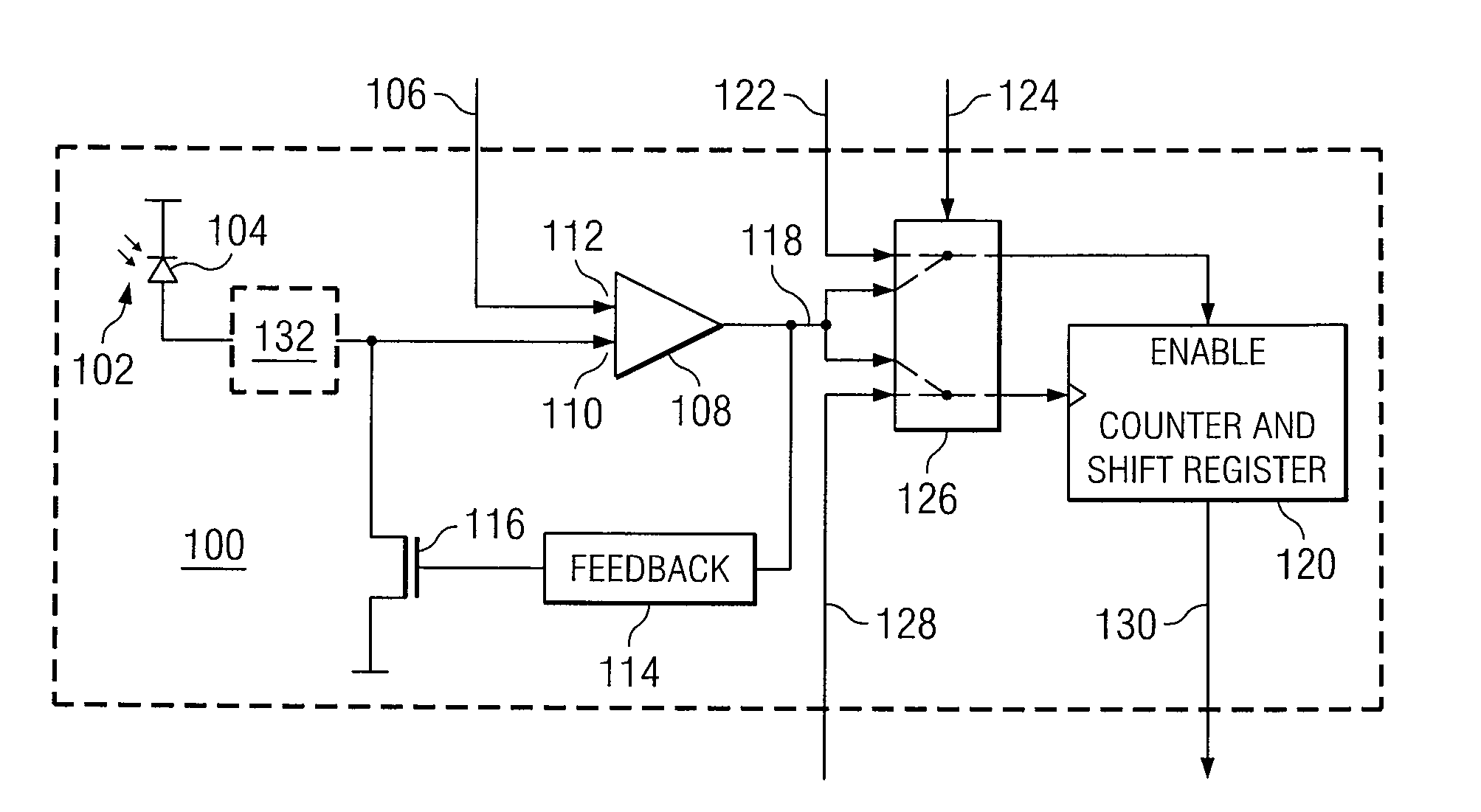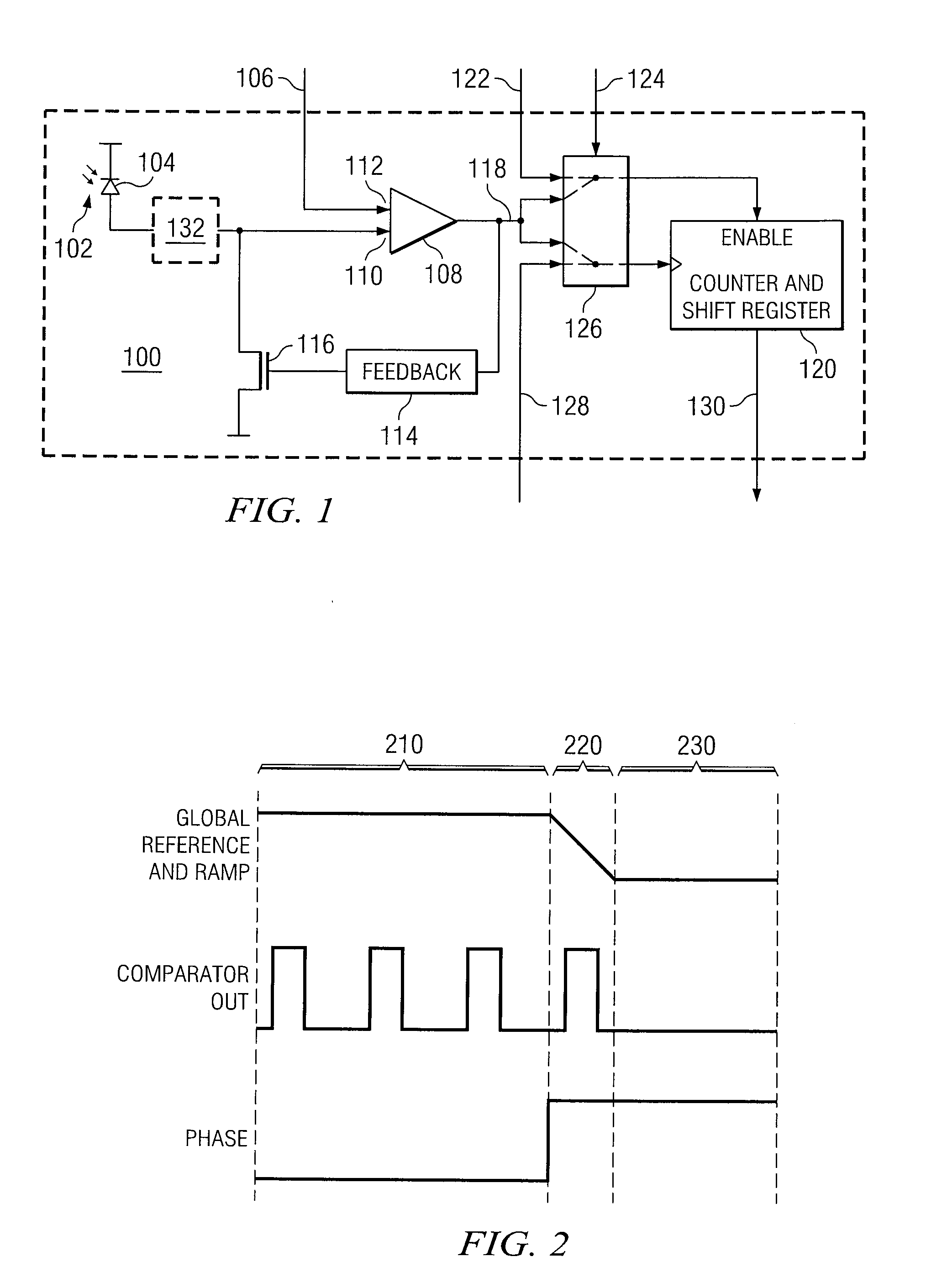Time-frequency fusion digital pixel sensor
a digital pixel sensor and time-frequency fusion technology, applied in the field of image sensors, can solve the problems of low light insensitivity, poor noise floor, high digital power consumption, etc., and achieve the effects of reasonable noise floor, reasonable noise floor, and high dynamic rang
- Summary
- Abstract
- Description
- Claims
- Application Information
AI Technical Summary
Benefits of technology
Problems solved by technology
Method used
Image
Examples
Embodiment Construction
[0010]FIG. 1 illustrates an example architecture for time-frequency fusion digital pixel sensor 100. In sensor 100, a detector 104 absorbs incident light 102 and generates a voltage signal provided to an input 110 of a comparator 108. The voltage signal at input 110 is proportional to an intensity of light 102. During a first phase of the sensor 100 operation, the voltage present at an input 112 of comparator 108 is fixed and comparator 108 generates pulses at an output 118 whenever the voltage at input 110 passes above the voltage at input 112. A feedback loop 114 resets the voltage at input 110 each time a pulse is generated. During the first phase, a most significant bits section of a counter 120 counts the number of pulses generated at output 118. If an amount of light 102 absorbed at detector 104 is relatively intense, the voltage present at input 110 will increase relatively rapidly and pass above the voltage at input 112 relatively often, producing a relatively high frequency...
PUM
 Login to View More
Login to View More Abstract
Description
Claims
Application Information
 Login to View More
Login to View More - R&D
- Intellectual Property
- Life Sciences
- Materials
- Tech Scout
- Unparalleled Data Quality
- Higher Quality Content
- 60% Fewer Hallucinations
Browse by: Latest US Patents, China's latest patents, Technical Efficacy Thesaurus, Application Domain, Technology Topic, Popular Technical Reports.
© 2025 PatSnap. All rights reserved.Legal|Privacy policy|Modern Slavery Act Transparency Statement|Sitemap|About US| Contact US: help@patsnap.com


